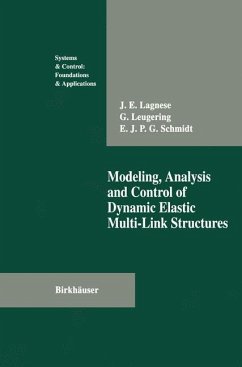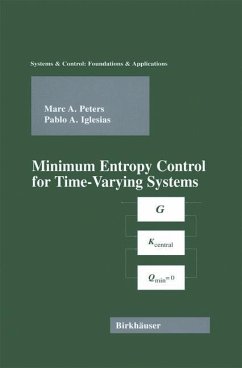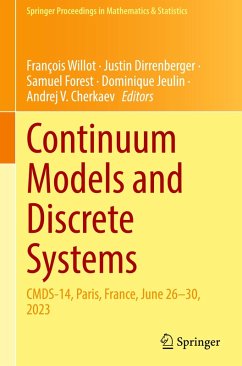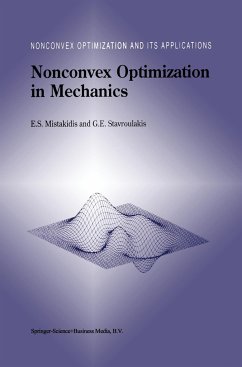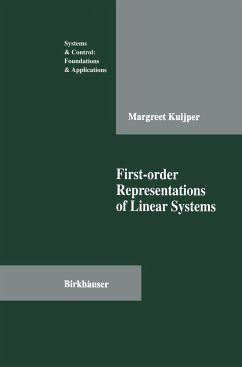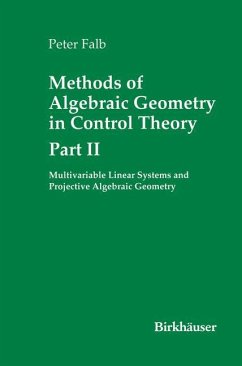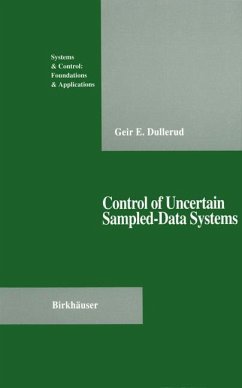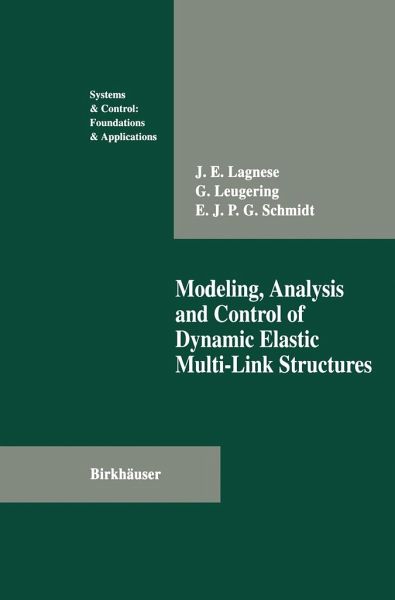
Modeling, Analysis and Control of Dynamic Elastic Multi-Link Structures
Versandkostenfrei!
Versandfertig in 6-10 Tagen
61,99 €
inkl. MwSt.
Weitere Ausgaben:

PAYBACK Punkte
31 °P sammeln!
I. Introduction.- 1. General Overview.- 2. On the Contents of the Book.- II. Modeling of Networks of Elastic Strings.- 1. Modeling of Nonlinear Elastic Strings.- 2. Networks of Nonlinear Elastic Strings.- 3. Linearization.- 4. Well-posedness of the Network Equations.- 5. Controllability of Networks of Elastic Strings.- 5.1. Exact Controllability of Tree Networks.- 5.2. Lack of Controllability for Networks with Closed Circuits.- 6. Stabilizability of String Networks.- 7. String Networks with Masses at the Nodes.- III. Networks of Thermoelastic Beams.- 1. Modeling of a Thin Thermoelastic Curved ...
I. Introduction.- 1. General Overview.- 2. On the Contents of the Book.- II. Modeling of Networks of Elastic Strings.- 1. Modeling of Nonlinear Elastic Strings.- 2. Networks of Nonlinear Elastic Strings.- 3. Linearization.- 4. Well-posedness of the Network Equations.- 5. Controllability of Networks of Elastic Strings.- 5.1. Exact Controllability of Tree Networks.- 5.2. Lack of Controllability for Networks with Closed Circuits.- 6. Stabilizability of String Networks.- 7. String Networks with Masses at the Nodes.- III. Networks of Thermoelastic Beams.- 1. Modeling of a Thin Thermoelastic Curved Beam.- 2. The Equations of Motion.- 2.1. Some Remarks on Warping and Torsion.- 3. Rotating Beams.- 3.1. Dynamic Stiffening.- 4. Straight, Untwisted, Nonshearable Nonlinear 3-d Beams.- 4.1. Approximation-Generalizations.- 5. Straight, Untwisted Shearable Linear 3-d Beams.- 6. Shearable Nonlinear 2-d Beams with Curvature.- 6.1. Approximation-Generalizations.- 7. A List of Beam Models.- Damping.- 8. Networks of Beams.- 8.1. Geometric Joint Conditions.- 8.1.1. Rigid Joints.- 8.1.2. Pinned Joints.- 8.2. Dynamic Joint Conditions.- 8.2.1. Rigid Joints.- 8.2.2. Pinned Joints.- 9. Rotating Two-link Flexible Nonlinear Shearable Beams.- IV. A General Hyperbolic Model for Networks.- 1. The General Model.- 2. Some Special Cases.- 2.1. String Networks.- 2.2. Networks of Planar Timoshenko Beams.- 2.4. Networks of Initially Curved Bresse Beams.- 2.5. Beams and Strings.- 3. Existence and Regularity of Solutions.- 4. Energy Estimates for Hyperbolic Systems.- 5. Exact Controllability of the Network Model.- 6. Stabilizability of the Network Model.- V. Spectral Analysis and Numerical Simulations.- 1. Preliminaries.- 1.1. Notation.- 1.2. Networks of Strings.- 1.3. Networks of Timoshenko Beams.- 1.4. Networks of Euler-Bernoulli Beams.- 2. Eigenvalue Problems for Networks of 1-d Elements.- 2.1. Introduction.- 2.2. General String Networks.- 2.3. Homogeneous String Networks.- 2.3.1. Examples.- 2.4. Networks of Timoshenko Beams.- 2.4.1. The Case Where ? =0.- 2.4.2. The Case Where ? Belongs to an Individual Beam.- 2.4.3. Eigenvalues for the Entire Graph.- 2.5. Homogeneous Timoshenko Networks.- 3. Numerical Simulations of Controlled 1-d Networks.- 3.1. Introductory Remarks.- 3.2. Networks of Strings.- 3.2.1. Absorbing Controls.- 3.2.2. Directing Controls.- 4. Finite Element Approximations of Timoshenko Networks.- 5. Implicit Runge-Kutta Method: Dry Friction at Joints.- VI. Interconnected Membranes.- 1. Modeling of Dynamic Nonlinear Elastic Membranes.- 1.1. Equations of Motion.- 1.2. Edge Conditions.- 1.3. Hamilton's Principle.- 2. Systems of Interconnected Elastic Membranes.- 2.1. Geometric Junction Conditions.- 2.2. Dynamic Conditions.- 2.3. Linearization.- 2.4. Well-Posedness of the Linear Model.- 3. Controllability of Linked Isotropic Membranes.- 3.1. Observability Estimates for the Homogeneous Problem.- 3.2. A Priori Estimates for Serially Connected Membranes.- 3.3. A Priori Estimates for Single Jointed Membrane Systems.- 3.4. The Reachable States.- 3.4.1. Serially Connected Membranes.- 3.4.2. Membrane Transmission Problems.- VII. Systems of Linked Plates.- 1. Modeling of Dynamic Nonlinear Elastic Plates.- 1.1. Equations of Motion.- 1.2. Edge Conditions.- 1.3. Hamilton's Principle.- 1.4. Additional Kinematic and Material Assumptions.- 1.5. Rotations Associated with Plate Deformation.- 2. Linearization.- 2.1. Linearization of Equations of Motion.- 2.2. Linearization of Edge Conditions.- 2.3. Hamilton's Principle for the Reissner Model.- 2.4. Linearization of the Vector Rotation Angle.- 2.5. The Kirchhoff Plate Model.- 3. Systems of Linked Reissner Plates.- 3.1. Geometric Junction Conditions.- 3.2. Linearization of the Geometric Joint Conditions.- 3.3. Dynamic Joint Conditions.- 3.3.1. Dynamic conditions at a connected joint.- 3.3.2. Dynamic conditions at a hinged joint.- 3.3.3. Dynamic conditions at a semi-rigid joint.- 3.3.4. Dynamic conditions at a rigid join...



